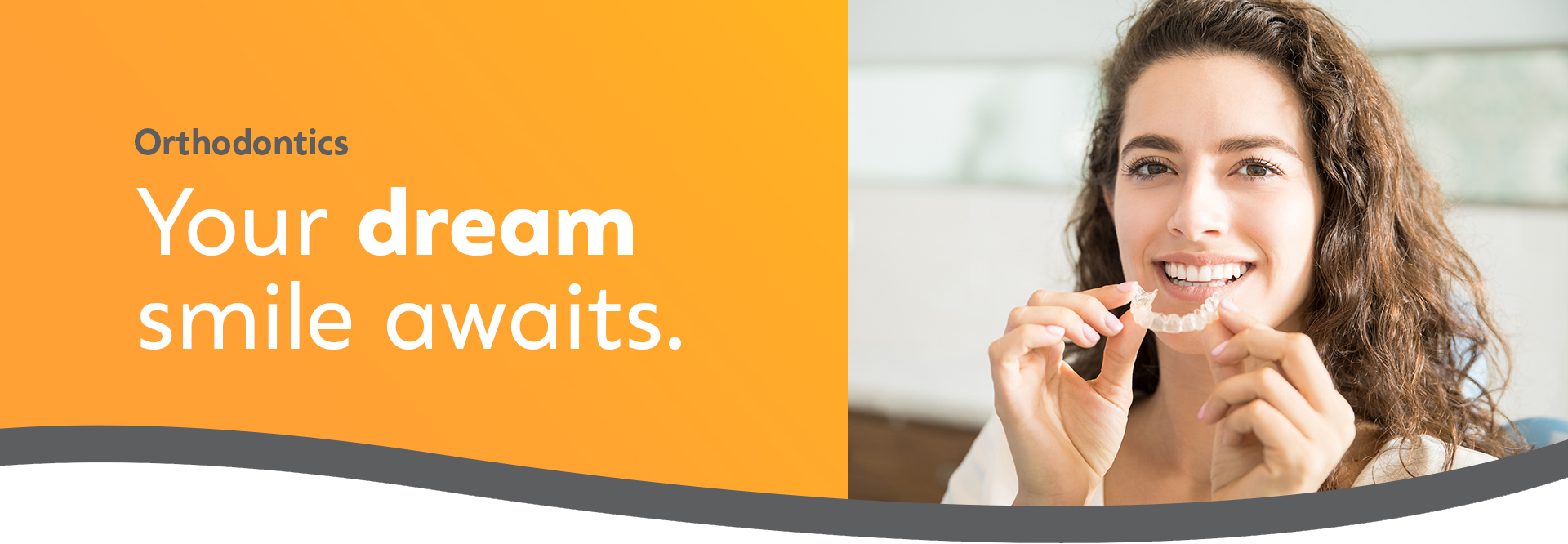
Orthodontics
Who is a Candidate for Orthodontic Treatment?
A healthy, confident smile is for everyone. Whether young or old, it is never too late to begin your journey to a lifetime of smiles. Children can benefit from early orthodontic intervention to modify the growth of the face and jaws during the years when craniofacial development is at its peak, and even adults can benefit from orthodontic treatment. Dr. Dentino, our orthodontic specialist, has the training and experience to help you achieve your goals – whether it is an express touch up for teeth that have shifted over the years, or a comprehensive correction of craniofacial growth imbalances.
Invisalign
Traditional Braces
Schedule your appointment today
Invisalign® Treatment
There’s never been a better time to straighten your teeth with the most advanced clear aligner in the world. Our office is proud to be a certified provider of Invisalign clear aligners, which give you a clear, convenient, and comfortable option to achieve the smile you’ve always wanted.
Why Invisalign treatment?
-
Proven results : SmartTrack® material and SmartForce® features are clinically proven to improve control of tooth movement with Invisalign clear aligners.
-
Better fit : Aligners made from SmartTrack material are comfortable, fit well, and are easy to put on and take off.
-
Effective : Invisalign clear aligners can treat a wide range of teeth-straightening conditions, including crossbites, crowding, open bites, gapped teeth, overbites, and underbites.
-
Virtually invisible : Most people won’t even know you’re going through treatment, because Invisalign aligners are virtually invisible!
-
Comfortable : Invisalign clear aligner trays are not only smooth and comfortable to wear, but they’re also removable. That means you can continue doing all the things you normally would, from brushing and flossing to eating whatever you like.
-
Convenient : Invisalign treatment is ideal for your busy schedule, since you only need to visit our office every six weeks.
Your First Consultation
Your Custom Treatment Plan
Your Invisalign Clear Aligners
Your Progress
Taking Care of Your New Smile
To learn more about the Invisalign system and all your orthodontic treatment options, please feel free to schedule an appointment at our office . We look forward to meeting you and helping you achieve a smile that’s made to move!
Invisalign and the Invisalign logo, among others, are trademarks of Align Technology, Inc., and are registered in the U.S. and other countries.
Traditional Braces
Brackets and wires together comprise a tried and true orthodontic appliance that your orthodontist can place to effectively straighten teeth and correct many types of malocclusions. At Ridgeview dental group we offer metal braces, which is the traditional appliance for orthodontic treatment in children and adults. We also offer “invisible” ceramic braces, a great option for patients who desire the efficiency of braces with the esthetic benefits of clear aligners.
Why Traditional Braces
-
Faster treatment: Some types of orthodontic problems can be solved more predictably or in a shorter amount of time when traditional brackets and wires are used. At your consultation visit, the doctor will review your records and determine whether braces might give you a faster or more predictable result.
-
Flexible options: With braces, the doctor may recommend adding some additional different types of appliances onto your wires. There are many types of auxiliary appliances that can be used in conjunction with brackets to solve specific orthodontic problems in a more efficient way.
-
Effective: Traditional braces are an effective and established treatment modality for a wide range of orthodontic problems, including crossbites, crowding, open bites, gapped teeth, overbites, and underbites.
-
Esthetic options: Some patients are worried about the appearance of metal brackets on their teeth, but we also offer invisible ceramic brackets that blend seamlessly into the natural color of your tooth enamel.
-
Comfortable: In our office, we use low profile brackets. This means they are as small as they can possibly be while staying attached to the tooth surface and effectively moving the tooth. We don’t add extra bulky tubes and hooks which are unnecessary and may irritate the soft tissues.
-
Convenient: Although the length of time between appointments may vary, you typically only need to visit our office every six weeks.
